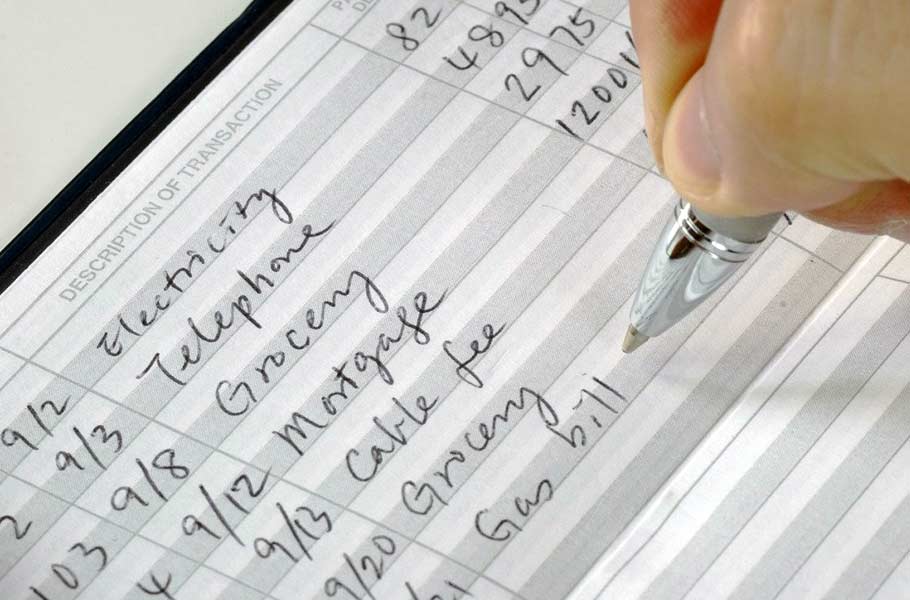Checking accounts are built for spending. Savings accounts are built for—well—saving. Knowing the difference helps you avoid fees, earn more interest, and make smarter money moves.

Each account type serves a different purpose, and choosing the right one can help you stay organized, cut costs, and reach your financial goals faster. This guide breaks down how checking and savings accounts work, how they compare, and how to pick the best fit for your money.
Checking vs. Savings: Side-by-Side Comparison
Before you decide which account fits your needs, here’s a quick look at how checking and savings accounts compare:
| Feature | Checking Account | Savings Account |
|---|---|---|
| Purpose | Daily spending and transactions | Long-term saving and goal setting |
| Interest Earned | Low or none | Typically higher, especially with online banks |
| Withdrawal Limits | No limits on withdrawals or transfers | May be limited per month |
| Access | Debit card, checks, ATM, online payments | Transfers to checking, limited ATM access |
Now let’s look at each type in detail.
What a Checking Account Is and How It Works
A checking account is a type of bank account that allows you to deposit money, write checks, and make electronic transfers. It’s a demand deposit account that typically includes features such as debit cards, online banking, and mobile banking capabilities. Checking accounts are intended for everyday transactions, like paying bills, making purchases, and accepting direct deposits.
How to choose a checking account
Choosing the right checking account can assist you in better money management and reduce costs related to fees. Here’s a concise guide on how to pick the ideal checking account for your needs:
- Look for a checking account that does not impose a monthly maintenance fee, or has a straightforward process to waive it.
- Consider accounts that offer free access to a vast ATM network, along with sign-up bonuses.
- Ensure the account provides a standard debit card for seamless everyday purchases.
- Thoroughly examine the details and be aware of any other fees linked to the account before deciding.
- Look for accounts that offer overdraft protection or have no overdraft fees.
Check out our picks for the best checking accounts.
Common transactions made with a checking account
Here are a few examples of the types of transactions that can typically be made with a checking account:
- Paying bills online or by mail
- Debit card purchases
- Withdrawing cash from an ATM
- Depositing paychecks via direct deposit
- Writing checks to pay for goods or services
- Making online transfers to other bank accounts
Types of Checking Accounts
There are several types of checking accounts, each built for different financial needs. Whether you want something simple or feature-packed, knowing your options can help you pick the right fit.
Basic Checking
This is the most common type of checking account. It’s designed for everyday use—paying bills, making purchases, and managing routine transactions. Basic checking accounts usually have low or no monthly fees and minimal balance requirements, making them a solid choice if you just need the essentials.
Interest Checking
An interest checking account earns interest on the account balance, providing an additional way to grow your money. These accounts usually have a higher minimum balance requirement to earn interest. If you maintain a significant balance in your checking account, an interest checking account can help you earn a return on your funds while still having easy access to your money.
Student Checking
A student checking account is designed specifically for students and generally offers no or low fees, as well as lower balance requirements. These accounts may also come with additional benefits such as discounted banking services or financial education resources. Student checking accounts are ideal for young adults who are just starting to manage their finances and need a low-cost, easy-to-use account.
Senior Checking
A senior checking account caters to the needs of older adults, typically offering lower fees and minimum balance requirements. These accounts may also provide additional benefits, such as discounted checks or free financial planning services. Senior checking accounts are suitable for retirees or those nearing retirement who want a low-cost account with added benefits.
Premium Checking
Premium checking accounts offer extra perks—like free checkbooks, ATM fee refunds, and higher interest rates. In exchange, they usually require a higher minimum balance and may charge monthly fees if you don’t meet it. This type of checking account works best for people who keep a large balance and want added benefits in return.
Online Checking
Online checking accounts are offered by digital-only banks with lower overhead, which often means no monthly fees, no minimum balance requirements, and better interest rates. These accounts are built for convenience, with mobile apps, budgeting tools, and 24/7 access. Online checking accounts are a great fit if you prefer to manage your money entirely online and want to avoid traditional banking fees.
Second Chance Checking
Second chance checking accounts are designed for customers who have had past banking issues, such as negative records in ChexSystems or credit problems. These accounts typically have higher fees and may require direct deposit. A second chance checking account offers an opportunity for individuals to rebuild their banking history and work toward better financial management.
How Savings Accounts Work and When to Use One
A savings account is a type of bank account that is designed for saving money and earning interest on those savings. This type of account usually provides higher interest rates than checking accounts, and comes with specific withdrawal restrictions. Some savings accounts also offer additional perks, such as online banking and mobile banking.
How to choose a savings account
Knowing what factors to examine when selecting a savings account can speed up your journey to reach financial goals. Here are some elements to consider when choosing a savings account:
- Search for a savings account that offers the highest annual percentage yield (APY) possible.
- Evaluate the fees of different banks and credit unions. Consider opening a savings account with an online bank, as they often offer superior interest rates.
- Review the account’s minimum deposit requirement, and look for accounts with a lower requirement or no requirement at all.
- Examine the account’s withdrawal and transfer restrictions, to guarantee they are consistent with your savings objectives.
Take a look at our picks for the best savings accounts.
Common transactions made with a savings account
- Depositing money for long-term savings goals or emergency funds
- Withdrawing money from the account, subject to withdrawal limits
- Monitoring account balance and transaction history
- Setting up automatic transfers from a checking account to a savings account
- Setting up direct deposit to the savings account
- Earning interest on the balance in the account
Types of Savings Accounts
In addition to a traditional savings account, there are several other types of savings accounts available to help you achieve your financial goals. Each type of savings account has its unique features, advantages, and limitations. Here are some common types of savings accounts:
High-Yield Savings Accounts
A high-yield savings account offers significantly higher interest rates compared to a traditional savings account. They are often available through online banks, which can afford to offer higher rates due to lower overhead costs. High-yield savings accounts are a great option for those looking to maximize their savings growth without taking on additional risk.
Here’s a list of the best available high-yield savings accounts for 2025.
Joint Savings Accounts
A joint savings account is a savings account shared by two or more individuals, typically spouses or family members. Joint account holders have equal access to the account and can manage the funds together. This type of account is ideal for couples or families who want to save together for shared financial goals or expenses.
Custodial Savings Accounts (UGMA/UTMA Accounts)
Custodial savings accounts let an adult—usually a parent or guardian—save money on behalf of a minor. The account is managed by the custodian until the child reaches adulthood, typically age 18 or 21 depending on the state. These accounts are often used to save for education, future expenses, or to help teach kids about managing money.
Health Savings Accounts (HSAs)
A Health Savings Account (HSA) is a tax-advantaged savings account specifically designed for individuals with high-deductible health plans (HDHPs). Contributions to HSAs are tax-deductible, and withdrawals for qualified medical expenses are tax-free. HSAs are an excellent way to save for healthcare costs while also benefiting from tax advantages.
Individual Development Accounts (IDAs)
An Individual Development Account (IDA) is a matched savings account designed to help low-income individuals save for specific purposes, such as buying a home, starting a business, or pursuing higher education. Nonprofit organizations and government agencies typically sponsor IDAs, which provide matching funds to encourage participants to save.
Goal-Oriented Savings Accounts
Some banks and credit unions offer a goal-oriented savings account designed to help account holders save for specific goals, such as buying a car, going on vacation, or creating an emergency fund. These accounts may include features such as automatic transfers, milestone rewards, or built-in savings trackers to help keep savers motivated and on track.
Other Types of Savings Accounts
Certificates of deposit (CDs) and money market accounts both offer the potential for a higher return on your money compared to traditional savings accounts.
Certificates of Deposit (CDs)
Certificates of deposit lock in your money for a set term—like 6 months or a year—in exchange for a fixed interest rate. They’re ideal if you want guaranteed returns and won’t need the money before the term ends. Just be aware: early withdrawals usually come with penalties.
Money Market Accounts
Money market accounts combine features of checking and savings. You get higher interest rates, check-writing access, and FDIC insurance. They’re a solid option if you want easy access to your funds and better returns than a standard savings account, though they may require a higher minimum balance and limit certain withdrawals.
Both options can help grow your money, but they work differently. CDs are better for locked-in savings with fixed returns, while money market accounts offer more flexibility. Compare rates, terms, and access before deciding.
Final Thoughts
Checking and savings accounts serve different purposes—but using both together can make your money work harder. A checking account gives you easy access for spending, while a savings account helps you build toward your goals.
Before opening an account, compare fees, features, and interest rates. The right mix can save you money, boost your savings, and simplify how you manage your finances.
Frequently Asked Questions
Should I keep my checking and savings accounts at the same bank?
It depends on your priorities. Keeping both at the same bank can make transfers faster and account management easier. But online banks or credit unions might offer better savings rates or lower fees. If you’re focused on convenience, sticking with one bank works well. If you’re chasing higher interest, splitting them up could pay off.
Is my money safe in checking or savings accounts?
Yes, your money is generally safe as long as the account is with an FDIC-insured bank or NCUA-insured credit union. These agencies protect deposits up to $250,000 per depositor, per institution. For added peace of mind, choose reputable institutions and review their financial strength if you’re depositing large sums.
Are there limits on withdrawals from checking or savings accounts?
- Checking accounts: You can typically withdraw or transfer funds as often as you like—there are no federal limits.
- Savings accounts: Many banks still limit certain withdrawals or transfers to six per month, even though the federal rule was lifted in 2020. Exceeding that limit can lead to fees or the account being changed to checking.
How do I know if I have a checking or savings account?
Check for features. If your account includes check-writing, a debit card, and unlimited transactions, it’s likely a checking account. If it earns interest and limits withdrawals, it’s probably a savings account. You can also confirm by looking at your bank’s app or statement—or just ask the bank directly.
Can I use a savings account to pay bills?
Not directly. Most savings accounts don’t support bill payments or debit card purchases. You’ll usually need to transfer money to your checking account first, then pay bills from there. If you need regular access to your funds, a checking account is the better option.




